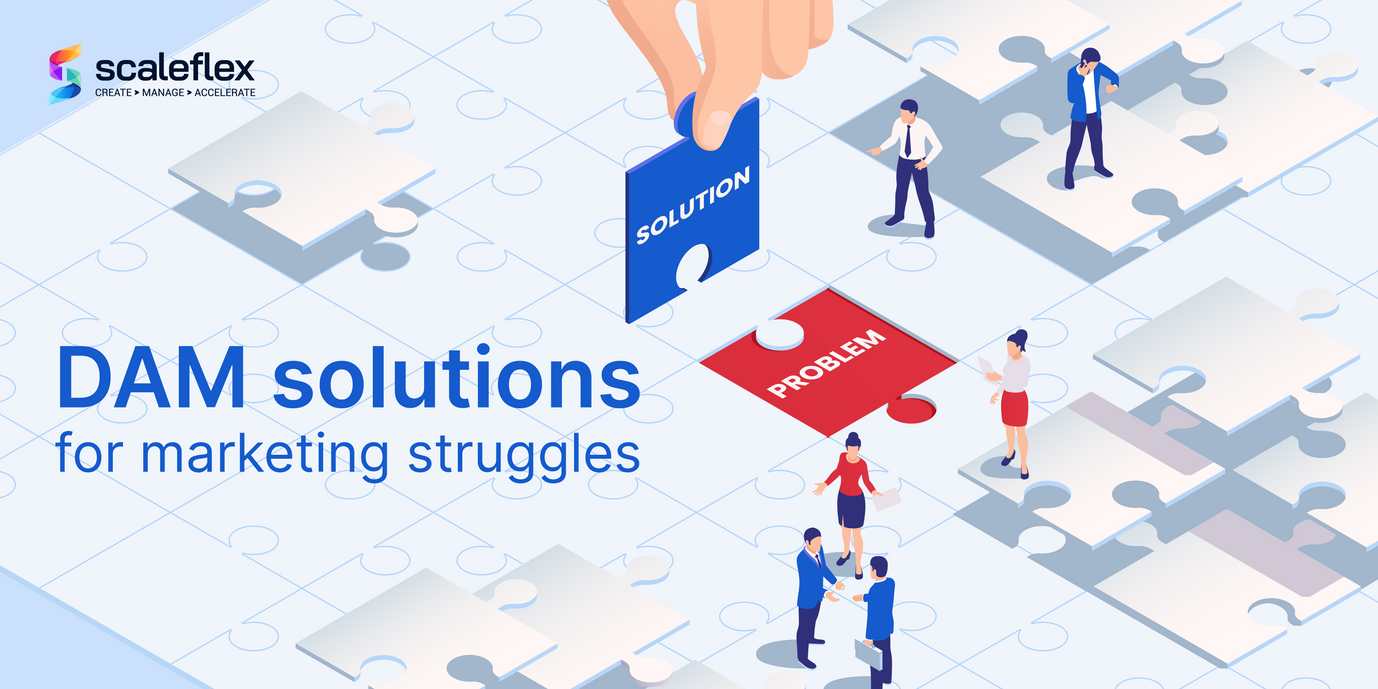Types Of Asset Management For Businesses: Their Strengths And Differences
Today we’re going to be diving into four specific types of asset management, their differences and their qualities. But before we can get started, the question begs itself: what exactly is asset management?
Asset management can be defined as the systematic process of overseeing, monitoring and maintaining different assets that are the property of individuals, businesses, or organizations. The end goal of asset management is to maximize the value of the asset and to optimize its usage. An “asset” can include anything, from tangible objects such as property, equipment and inventory, to intangible things like intellectual property, patents, trademarks and digital content.
Let’s explore what are the types of asset management, and the distinct purpose they each serve:
- For starters, we have Financial Asset Management: this kind of asset management focuses on managing financial assets such as stocks, bonds and other investment products. The goal is to achieve specific financial results, like for example capital preservation, income generation or capital appreciation.
- Secondly, we have Real Estate Asset Management: this refers to the handling and managing of real estate properties, including their acquisition, development and leasing, all with the purpose of maximizing property value, and generating returns on investment for owners or investors.
- Thirdly comes Infrastructure Asset Management, a kind of asset management concerned with the caring for physical infrastructure assets, such as roads, bridges, utilities, and public facilities, in order to guarantee their maintenance, functionality and longevity.
- In fourth place we count Natural Resource Asset Management, an indispensable type of asset management currently, which involves the sustainable management of natural resources, such as forests, water bodies and mineral deposits, in order to ensure their conservation, correct utilization and replenishment for future generations.
- In fifth place, we have Digital Asset Management, this includes the organization, storage, retrieval and distribution of any kind of digital asset, such as videos, images, documents and creative files.
- Finally, we have Information Technology Asset Management, which is involved in the tracking, optimization and maintenance of an organization’s IT assets, ranging from hardware, software and data.
Although these are all very different kinds of asset management, they all share the common objective of enhancing asset value, reducing risks, and guaranteeing optimal usage, in different contexts and with a variety of methods, specifically tailored to the asset class being managed.
For the purpose and focus of this article, we will center primarily on digital asset management (DAM) and IT asset management (ITAM) as well as some of their subcategories, due to the fundamentally crucial role they play in guaranteeing the seamless digital functioning of modern-day companies.
Both DAM and ITAM, as well as Data Asset Management and Software Asset Management, which are within their sphere, are essential in supporting the digital operations of businesses and driving their success. In this article, we’ll dive deeper into their principles, their different benefits, as well as their key differences in order to help you understand which one is the most appropriate or needed for your own business.
What is Digital Asset Management?
Starting our exploration with Digital Asset Management: DAM serves as the foundation of any modern company’s digital operations, as it offers a comprehensive set of functionalities to streamline the organization, storage, retrieval, modification and distribution of digital assets.
In essence, a DAM provides a centralized repository for enterprises to securely store a broad range of digital content, then can include: images, videos, documents, audio files as well as any and every creative asset. Through the implementation or robust systems of metadata tagging and categorization, DAMs enable efficient search as well as easy and fast retrieval of assets. These solutions save businesses valuable time and minimize efforts.
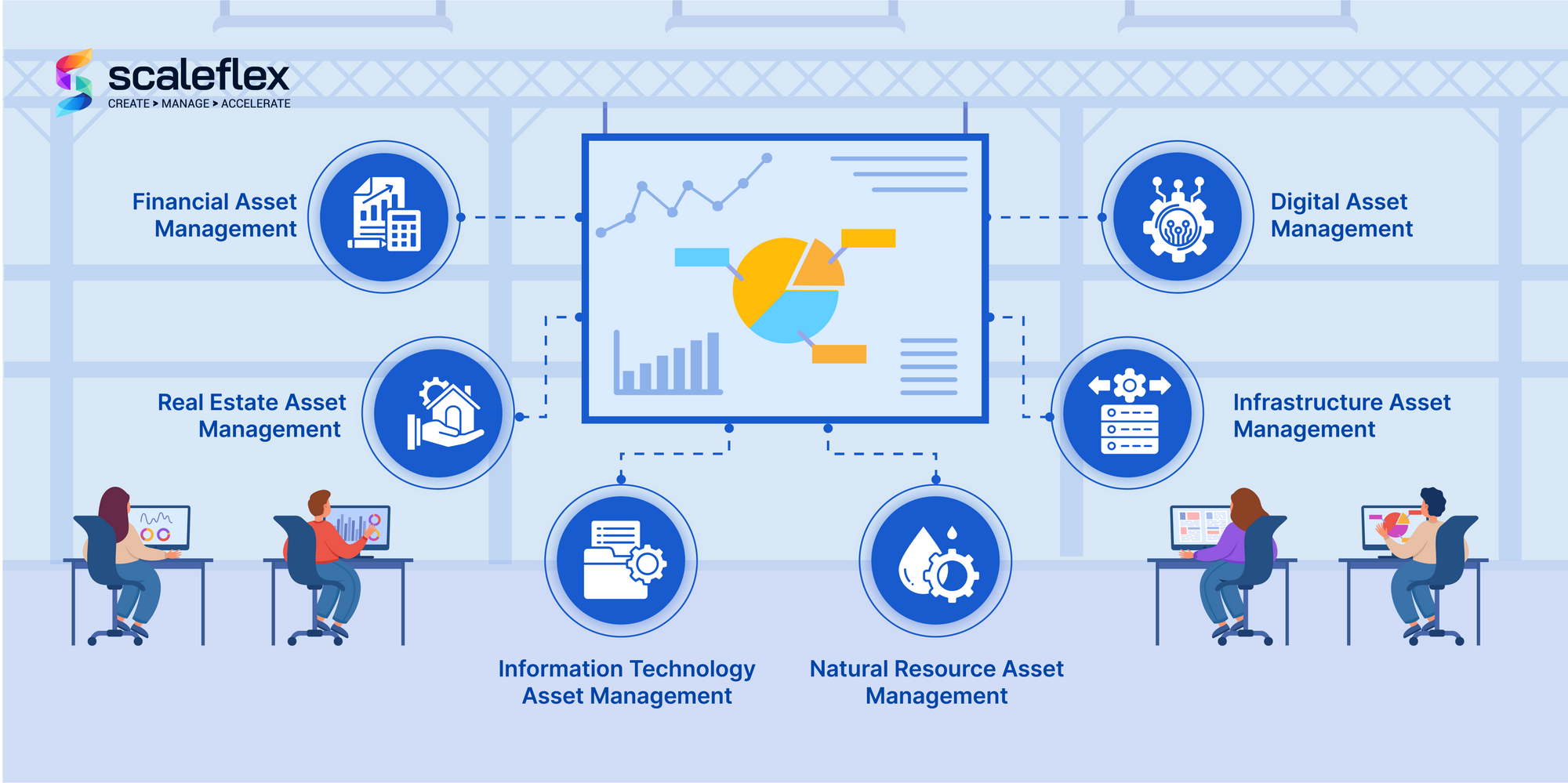
Furthermore, DAM solutions will usually incorporate some features to control versions. This ensures that teams always have access to the most recent iteration of an asset, all the while preserving historical versions, for reference as well as compliance purposes. This unique capability notably improves collaboration amongst distributed teams and any external stakeholders, improving workflows and accelerating the delivery of projects.
Finally, a DAM platform will typically offer sophisticated rights management functionalities. This allows administrators to define access permissions and usage rights, as well as expiration dates for assets. This guarantees the safety of intellectual property and ensures regulatory compliance.
For companies, the benefits of using a DAM platform extend well beyond the organization and control of assets. DAMs facilitate the maintenance of brand consistency, since they centralize approved assets and brand guidelines. They empower teams to create engaging, on-brand content for any marketing channel, and finally, they enhance the reuse and repurposing of content, thus maximizing the value of every asset, as well as minimizing production costs.
Digital Asset Management vs. Data Asset Management
Now that we have an understanding of Digital Asset Management we can broach the subject of its differences with Data Asset Management. While the first deals mostly with the organization and the distribution of digital content such as images, videos and documents, the second, also known as Data Management, focuses more on the strategic management of structured and unstructured data within an organization.
Data Asset Management has a broad scope which includes data governance, quality assurance, data integration and data lifecycle management. Diverging from DAM, with its emphasis on creative assets, Data Asset Management deals mostly with data as an asset, understanding its value in decision making processes, analytics and innovation projects.
Some of the processes involved in Data Asset Management are data classification, lineage tracking and data stewardship. This works to ensure the integrity, consistency and compliance of a company’s data with any regulatory requirements. It can also be broadened to include certain activities such as data cleansing, enrichment and modeling, that optimize the data’s quality and usability.
To underline the main differences, it’s important to understand that Digital Asset Management focuses on the management of creative content for marketing, branding and revenue purposes, while Data Asset Management is concerned with the handling of data to support business objectives, analytics and regulatory compliance. They can be, however, intimately linked, as digital assets often carry important data.
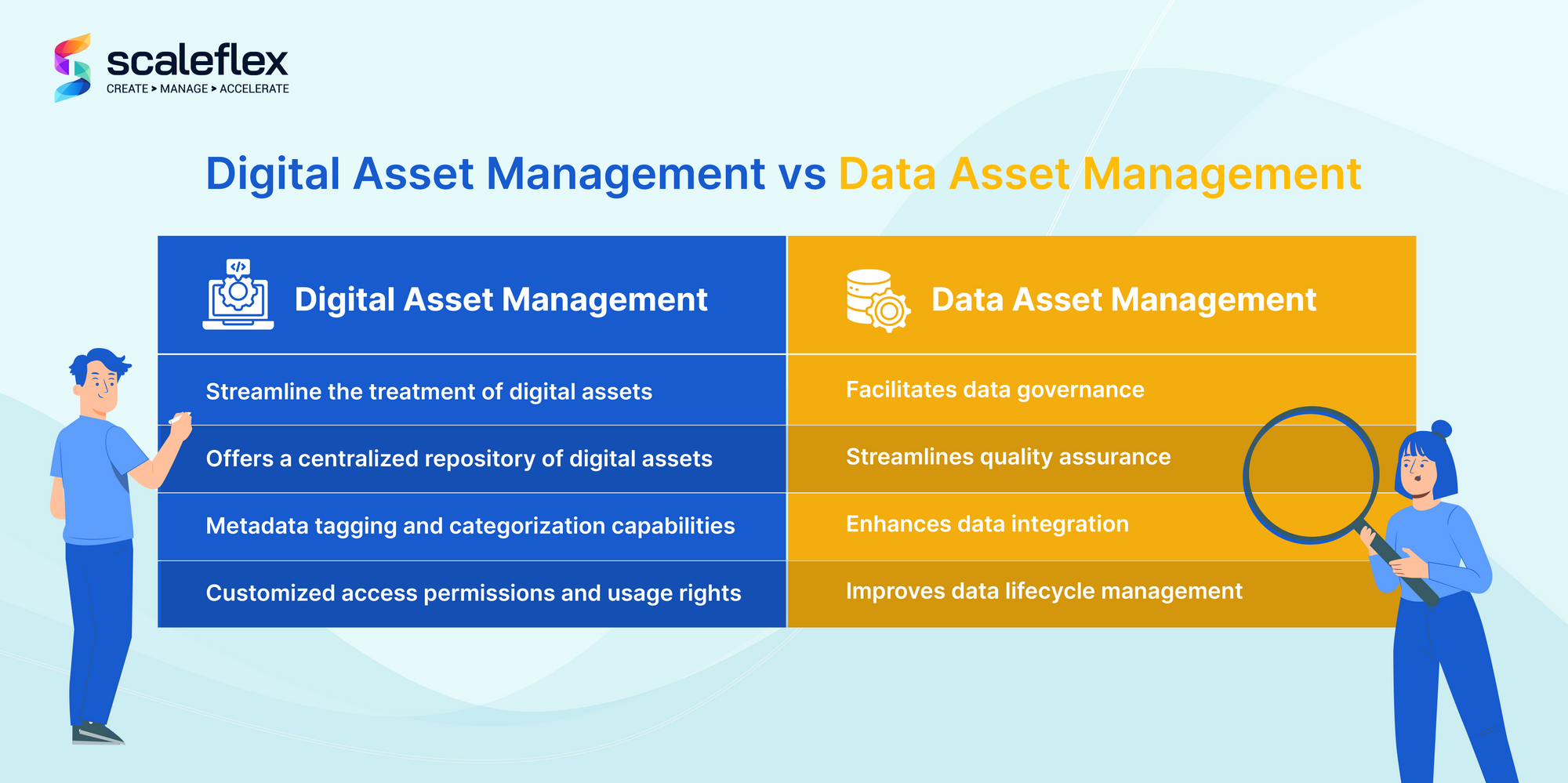
What is IT Asset Management?
IT Asset Management, also commonly referred to as ITAM, is a structured and disciplined approach to the management and optimization of IT assets in an organization throughout their lifecycle. Said assets can include hardware devices, software applications, networking equipment as well as any peripherals. The main goal of ITAM is to guarantee that said assets are being used efficiently, maintained correctly, and aligned with the organization’s business objectives.
In essence, ITAM will involve different processes, like asset inventory management, which comprises the identification, tracking and documentation of all IT assets within a company. This gives visibility into the IT infrastructure, enabling the organization to make informed decisions about the usage of assets, their maintenance and procurement.
Moreover, IT Asset Management also encompasses activities like license management, where software licenses are tracked to assure compliance with vendor agreements, and optimize vendor usage to limit the spend of unnecessary or irrelevant costs. A key aspect of ITAM is maintenance scheduling, which ensures that hardware assets are maintained properly to minimize their downtime and extend their operational life.
IT Asset Management has a crucial role to play when it comes to:
- Optimizing IT investments
- Reducing equipment, license and software costs
- Mitigating potential risks
- Supporting a governance strategy
IT Asset Management vs. Software Asset Management
Both IT Asset Management and Software Asset Management are essential to managing any organization’s technological resources. However, they differ greatly in focus and scope, and the nuance is important.
Software Asset Management is a very specific sub-component of IT Asset Management that deals with the management of software assets within an organization. It involves certain processes such as software license tracking, compliance management and optimization of software deployments. As such, Software Asset Management’s focus is to guarantee the company has the right number of software licenses, in their appropriate and necessary version, to support the operation and reduce costs as well as any compliance risk.
IT Asset Management, on the other hand, includes a broader range of assets, as it goes from hardware devices, to peripherals, to networking equipment and, of course, software. While SAM is a more focused, specific variation, concerned primarily with software licenses and their deployments, ITAM is the umbrella-management that addresses the entire lifecycle of any IT asset, from its acquisition to its disposal.
To be concise, the main difference is that while ITAM includes any and every asset that may fall under the “IT” umbrella term, Software Asset Management concretely focuses on the management of software assets, guaranteeing compliance, optimizing costs, and maximizing the value derived from said assets.
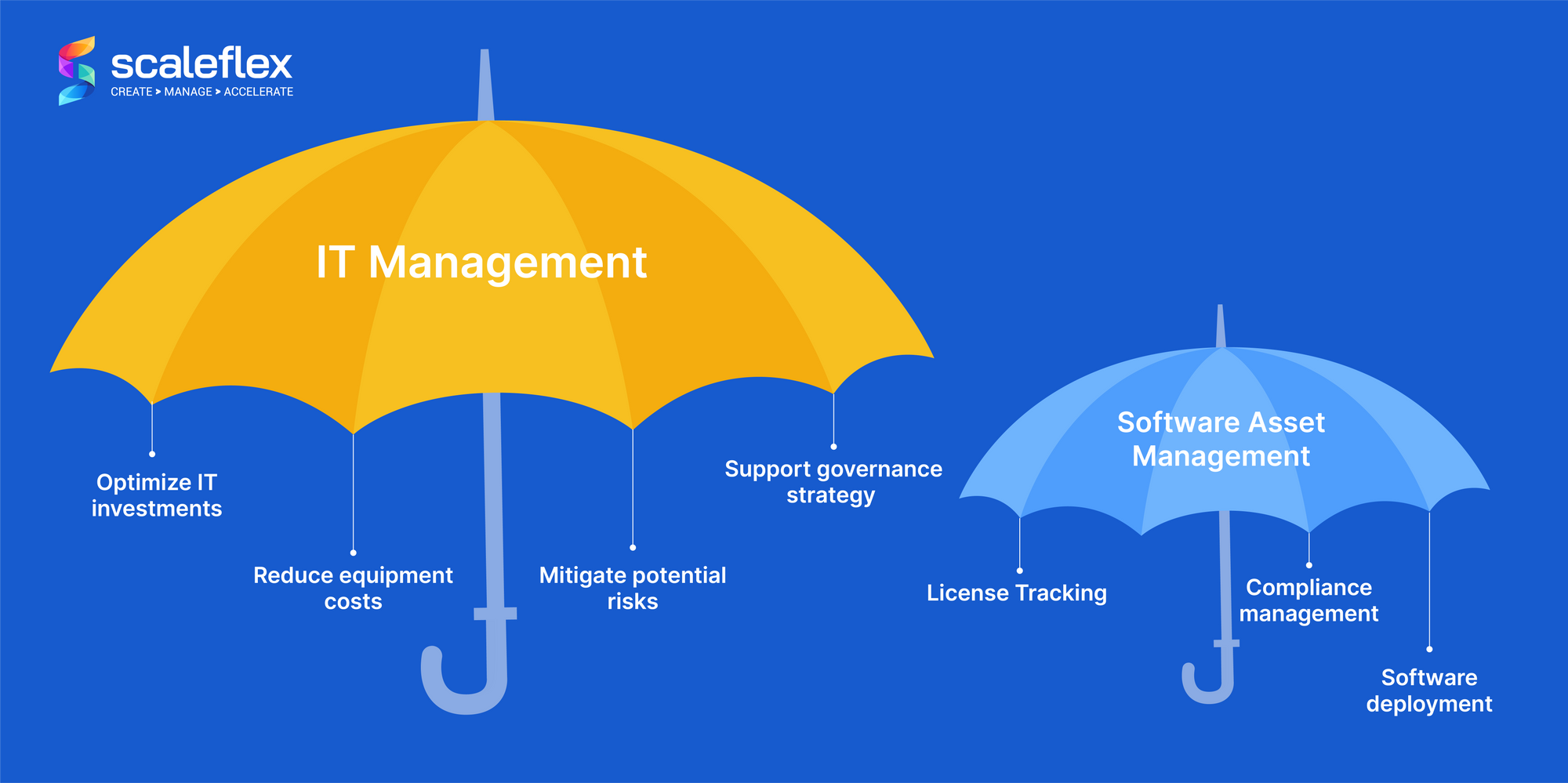
How can I know which type of Asset Management is right for my business?
Figuring out which of the many types of asset management is the most convenient for a company requires a comprehensive understanding of its goals, operational requirements, and resource allocation priorities.
For any company that heavily relies on creative content production, marketing or brand management, Digital Asset Management (DAM) is paramount. DAM facilitates effective and efficient organization, retrieval and distribution of digital assets, as well as collaboration and brand consistency. It is as such an essential element to the success of companies with a strong online or digital presence, or with several selling points across different locations, or, in general, with many different touchpoints and stakeholders all needing to be up-to-date and well informed on the brand.
In parallel, organizations that depend on data-driven decision-making and analytics could benefit most from Data Asset Management, as it concerns itself with the management of structured and unstructured data to ensure data quality, governance and compliance.
Some companies that count an extensive IT infrastructure that includes hardware, software and network components will find that IT Asset Management is crucial, as it provides visibility and control over IT assets. It can optimize resource allocation, reduce risks and ensure compliance with licensing and security requirements.
Finally, organizations with a very precise need of optimizing software usage and controlling software-related expenses, Software Asset Management might prove the most necessary and suitable option, as it helps manage software licenses, deployments and usage.
Ultimately, the choice between any of the different types of asset management will depend on the specific needs, priorities and strategic objectives of the specific company concerned. Only the in-depth analysis of these factors will render the ultimate answer to what the most appropriate asset management approach will be to meet their unique requirements.
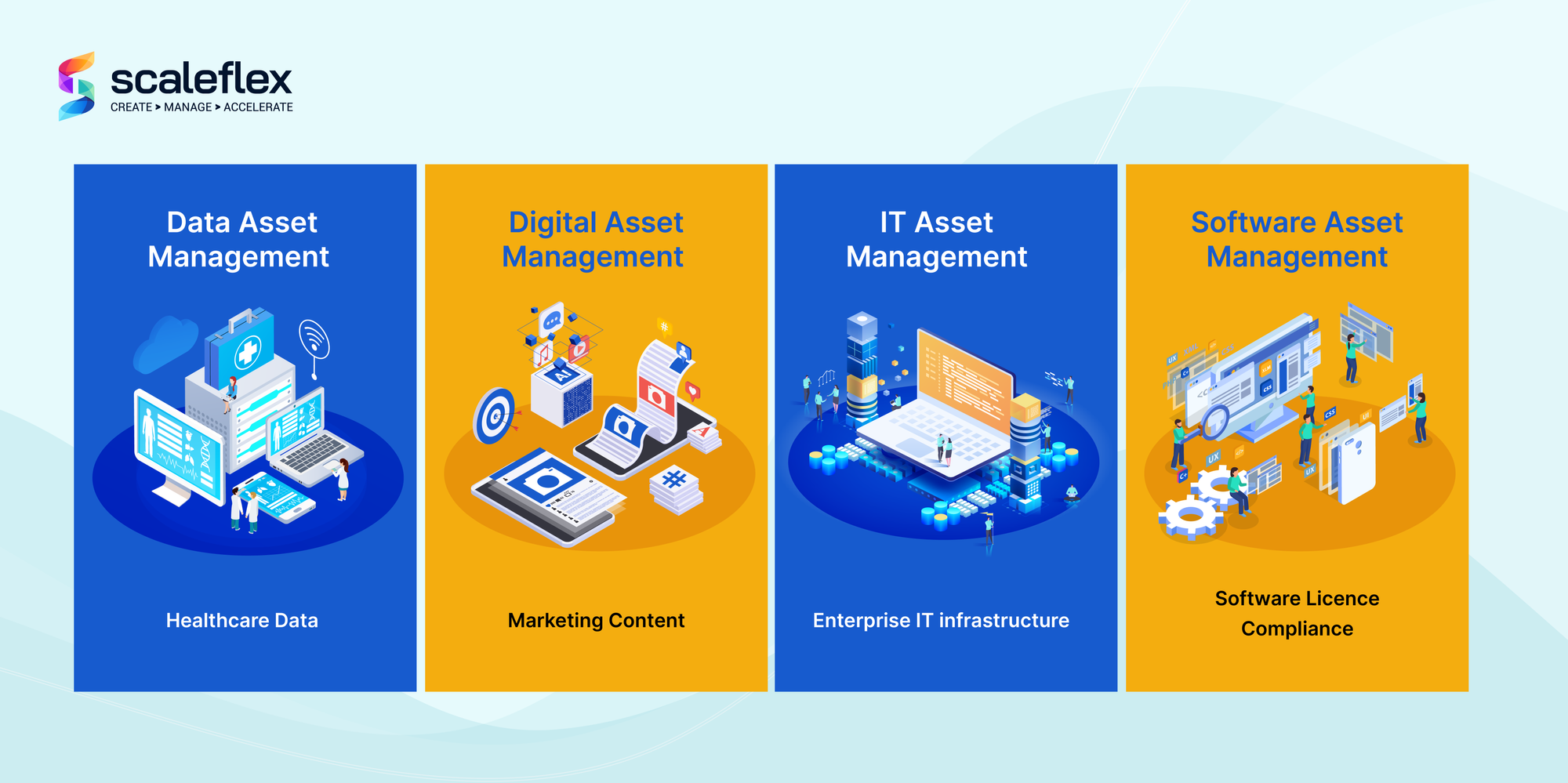
Key Takeaways
In conclusion, we understand that asset management encompasses different disciplines, and can be tailored to the specific needs of any organization. Digital Asset Management streamlines the distribution and organization of digital content, ensures collaboration and consistency across channels and facilitates maintenance of the brand image.
As we’ve seen, Data Management is concerned with Governing and managing data in any form. Finally, IT management optimizes the lifecycle of hardware, software and peripherals. Selecting the right kind of asset management approach for a company will depend in its objectives, and, in many instances, a multi-management approach will be needed, as more companies find themselves to be concerned and impacted by a growing number of concerns, with the development of a healthy digital image and presence being at the cornerstone of efficient growth and revenue in our current landscape.



